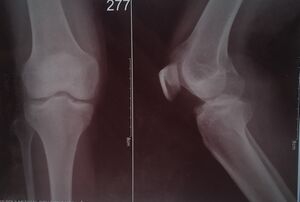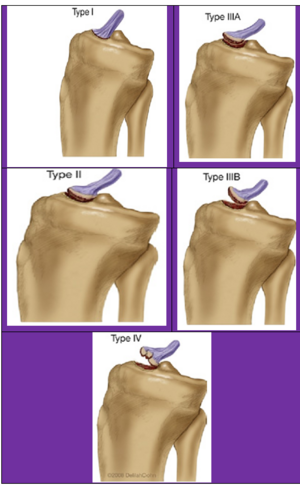Tibial Spine Fracture and Physical Therapy Protocol
Introduction[edit | edit source]
Tibial spine fracture (also called Tibial Eminence Fracture) is a break at the top of the tibia bone in the lower leg near the knee as a result of high amounts of tension placed upon the anterior cruciate ligament (ACL). This type of injury is most common in
1) children ages 8 to 14 years of age.
2) The incidence of these fractures is higher among adolescent girls due to their inherent skeletal immaturity.
3) It has also been proposed that injury occurs secondary to greater elasticity of ligaments in young people .
4) It can occur during a sporting event or direct trauma with a hyperextension injury causes an avulsion fracture occurring at the tibial eminence while the ACL is spared.
This type of force causes the ACL to pull on the tibial spine. Because the bones of children this age still have open growth plates, the ACL is stronger than the tibial spine and can pull away from the bone (avulse), causing a fracture.
Under the Meyers and McKeever system (with modifications by Zaricznyj) injuries are classified into four main types:
- type 1: minimally/nondisplaced fragment
- type 2: anterior elevation of the fragment
- type 3: complete separation of the fragment
- type 3a: involves small portion of eminence
- type 3b: involves the majority of the eminence
- type 4: comminuted avulsion or rotation of the fracture fragments








